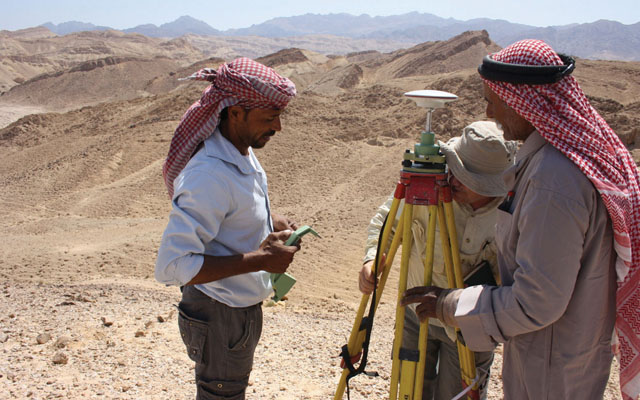AMMAN — The Jordan Valley Authority (JVA) on Wednesday announced an integrated master plan for the development of Wadi Araba, which will entail water, agricultural, tourist and industrial ventures.
During its session on Tuesday, the Cabinet decided to shift Wadi Araba from the jurisdiction of the Aqaba Special Economic Zone Authority to the JVA.
“[The decision] seeks to create comprehensive development across the country… the Cabinet has approved the plan submitted by the infrastructure committee for bringing integrated development to Wadi Araba,” Water Minister Hazem Nasser said in a statement e-mailed to The Jordan Times.
Nasser, who is chairman of JVA’s board of directors, said the authority will be able to carry out the planned development projects in Wadi Araba, given its extensive experience in managing the Jordan Valley.
The JVA will create a new specialised unit that will supervise the implementation of the development projects in Wadi Araba, a 165-kilometre long and 9-25-kilometre-wide area between Southern Ghor and the Gulf of Aqaba, an official at the ministry told The Jordan Times.
In the statement, Nasser underscored that the development ventures will be implemented once funding is secured, highlighting that the projects seek to attract people to live in Wadi Araba and businessmen to invest in the area.
In addition, the JVA will carry out assessment surveys of the area’s natural resources and evaluate existing and planned industries to identify the industrial sector’s needs, according to the minister.
Increasing agricultural activity in Wadi Araba is among the main pillars of the master plan, Nasser said, noting that the JVA will continue to support irrigated cultivation by expanding agricultural projects and extending more irrigation networks.
Current agricultural activity will be evaluated and new projects will be planned after the JVA identifies which types of crops best suit the area, Nasser added, highlighting that projects to improve animal production in Wadi Araba are also proposed under the master plan.
“The agricultural lands in Wadi Araba will be increased by 8,000 dunums at a cost of JD22 million to benefit from existing water resources in the area,” he said.
The master plan also includes the construction of several dams and sand dams, including the Wadi Musa Dam, which is designed to hold 1.2 million cubic metres (mcm), at an estimated cost of JD6 million.
Another JD6 million dam will be established in Wadi Rahmah to store 650,000 cubic metres, as well as a JD1.5 million dam in Wadi Al Fidan, with a capacity of 1mcm, the minister said in the statement.
Two sand dams, each with a capacity of 100,000 cubic metres, will be established in Qreiqrah and Rahmah this year at a cost of JD500,000, according to Nasser.
Meanwhile, the planned Red Sea-Dead Sea Water Conveyance Project, which will pass through Wadi Araba, is expected to have a major impact on the area’s development by attracting investment, the minister noted.
“Lakes will be created to establish tourist projects, chalets and entertainment centres, in addition to artificial sea-water lakes for fish farming.”
Nasser explained that the master plan has indentified land usage in Wadi Araba in accordance with its topography, infrastructure, historical and archaeological sites, nature reserves as well as locations that attract birds.
Wadi Araba is situated along Rift Valley-Red Sea route, which is the world’s second most-used flyway, with 37 types of migratory soaring birds that maintain flight by using rising air currents, travelling on the flyway annually, according to the Royal Society for the Conservation of Nature.
Migratory birds in the southern hemisphere use the Rift Valley/Red Sea Flyway to return to Europe and the northern hemisphere in the spring. On their journey, more than 1.5 million birds stop over in places like the Jordan Valley to rest and drink water.
At least five of these species are globally endangered, such as white and black storks, buzzards, eagles and vultures.
